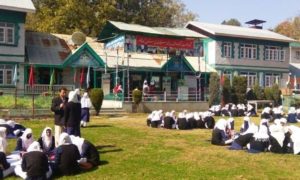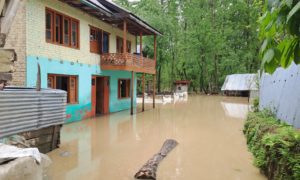Srinagar: Chilblains, known as “shoooh” in Kashmir, is a medical condition that occurs in response to cold temperatures, particularly during winter. As Kashmiri is under the grip of Chilla-e-qalaan, a 40-day long harsh winter period, the harsh winter conditions can contribute to the development of chilblains.
Chilblains are localised, painful inflammation of small blood vessels in the skin that typically occur on the extremities, such as fingers and toes. They are caused by an abnormal skin response to cold exposure, followed by rewarming. The condition is more common in regions with cold and damp climates, making it a concern in colder areas like Kashmir.
Symptoms: Red or purple discolouration of the skin. Swelling and tenderness in the affected areas. Itching or a burning sensation. Small, itchy blisters may develop. In severe cases, ulceration and infection may occur.
Tips to avoid chilblains: Keep warm: Dress in layers to maintain body warmth, especially in extremities. Stay dry: Moisture can exacerbate the condition, so keep feet and hands dry. Protective clothing: Wear warm gloves, socks, and proper footwear to shield extremities from cold. Avoid rapid temperature changes: Limit exposure to extreme temperature changes, and gradually warm up if exposed to cold.
Treatment and management: Warming gradually: If exposed to cold, avoid sudden temperature changes when warming up. Topical ointments: Apply creams or ointments to alleviate symptoms and promote healing. Avoid scratching: Resist the urge to scratch affected areas to prevent further irritation. Medical attention: In severe cases or if complications arise, consult a healthcare professional.
Repercussions and complications: Chilblains can cause discomfort and pain. There’s a risk of infection if blisters or ulcers develop. Recurrent chilblains may lead to long-term skin damage.
Preventive measures: Maintain warmth: Use heating devices and warm clothing. Regular exercise: Stimulate blood circulation through regular physical activity. Healthy lifestyle: Stay well-hydrated and maintain a balanced diet for overall skin health. It’s essential to consult with a healthcare professional for proper diagnosis and treatment if you suspect chilblains. They can provide tailored advice based on the severity of the condition.














